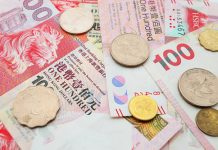Dollar Closes September Strong but Possible Correction Ahead. September was a strong month for the U.S. dollar, but as we look ahead to October, the greenback’s momentum is fading and the odds of a correction outweigh the chance of continuation. October is when we will begin to see the negative impact of hurricanes Harvey and Irma on the U.S. economy, for example US payrolls on Friday were expected to have been weak.
Outlook for Eurozone is Positive On Fundamental Basis. The euro has finally stabilized as investors realize that at the end of the day Angela Merkel will still be leading the country and it won’t be long before a coalition government is formed. EUR/USD traders could celebrate the announcement by driving the currency higher on the elimination of election uncertainty. No major Eurozone economic reports are scheduled for release in the coming week.
The Euro Fell on Monday After the Violence-Marred Vote. The euro edged down 0.1 percent to $1.1796, as investors nervously watched the situation in Spain, where police used batons and rubber bullets to thwart the Catalan vote on Sunday in a show of force that left hundreds injured. The euro fell around a third of a U.S. cent to as low as $1.1776 in early Asian trade but soon steadied at $1.1800.
Important Week for Sterling as All 3 of The U.K.’s PMI Reports Are Due for Release. PMI reports due this week will be exceptionally important. If manufacturing, service and construction sector activity accelerate, it would validate the BoE’s calls for tightening and reinvigorate the rise in pound sterling.
However, if manufacturing and/or service sector activity slows, it would cast doubt on the central bank’s plans and cause the currency to give up some of the gains that it enjoyed in September against the dollar and the euro.
Dollar Rose 0.2 Percent to 112.71 Against The Yen. Data released earlier on Monday showed Japan’s big manufacturers were the most confident about the business outlook in a decade in the last quarter, a sign the country’s economic recovery may be gathering steam thanks to robust global demand. The figures could also help premier Shinzo Abe as he tries to convince voters in an Oct. 22 election that his “Abenomics” stimulus policies have improved their livelihoods, analys. There are two main directional scenarios for the yen following the election, though, dollar/yen is still dominated by U.S. factors.
Kiwi Little Changed After Mixed US Data. The New Zealand dollar, which has shed about 1.5 percent since the Sept. 23 election, was little changed after mixed US data gave few clues to the pace of Federal Reserve monetary policy changes. Also, NZ First leader Winston Peters says he won’t begin talks on forming a coalition government until Oct. 7, after special votes are counted, leaving the media to speculate on which way he will turn.
Gold Heads for Worst Month in 2017. Gold prices have edged lower as slightly weaker US inflation and consumer spending data did little to dampen expectations of an interest rate hike in December. Spot gold dipped 0.3 per cent at $US1,274.61 per ounce.
Oil Prices Edge Lower After Strong Third-Quarter. Oil prices edged lower on Monday in early Asian trading, pausing for breath after posting gains of as much as 20 percent in the third quarter, after a survey pointed to a slight increase in OPEC production in September. U.S. crude was down 2 cents at $51.65 a barrel, Brent crude for December delivery, was down 6 cents at $56.73 a barrel.
Watch Out Today for:
08:30 am GMT: GBP Manufacturing PMI
14:00 pm GMT: USD ISM Manufacturing PMI












